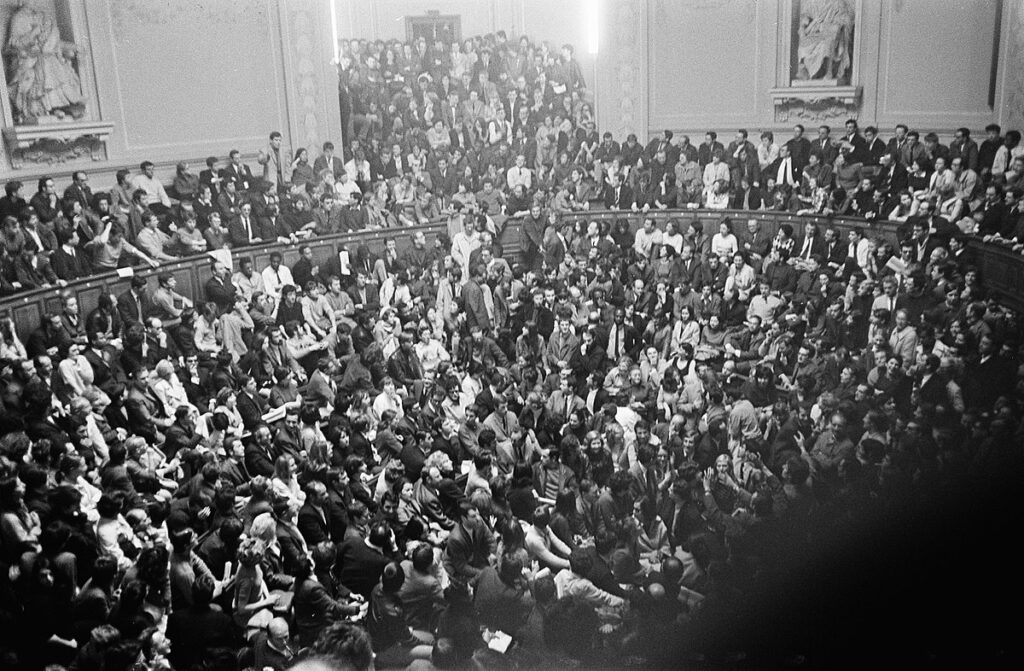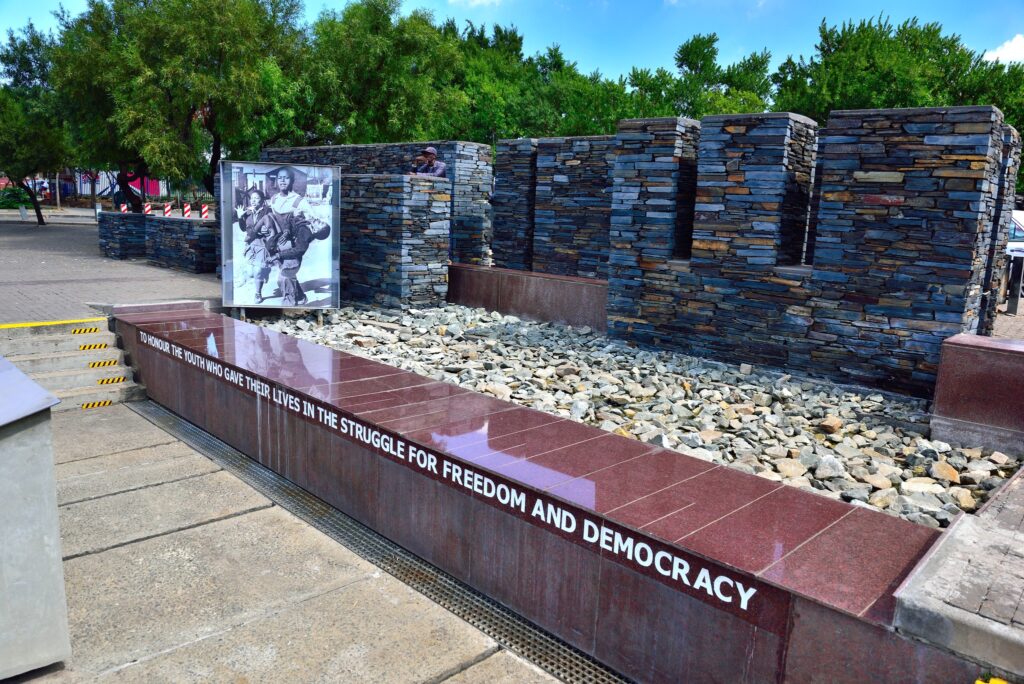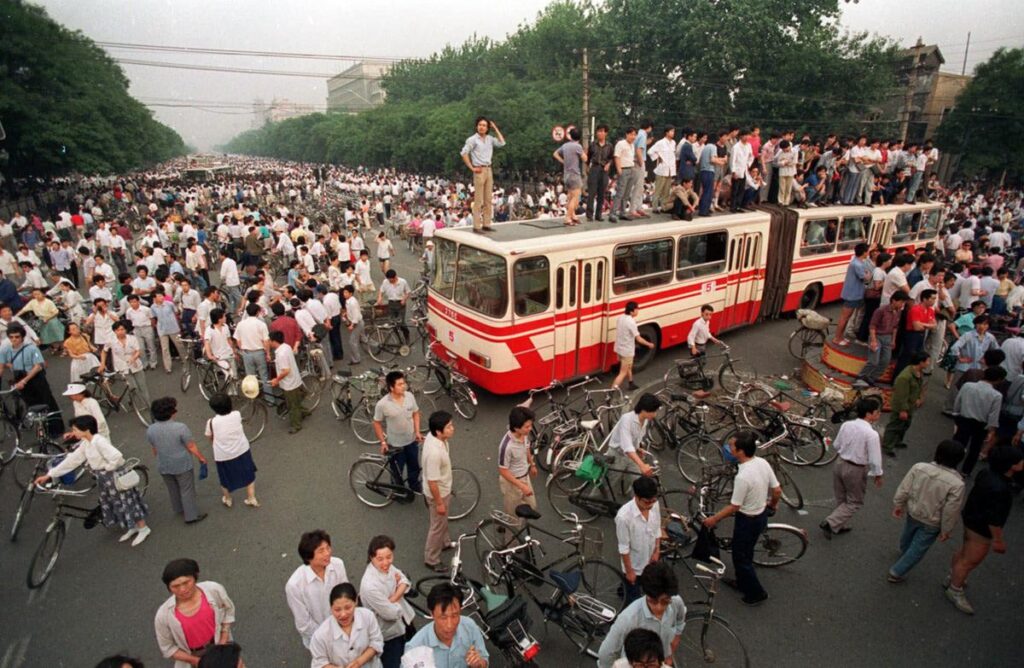Advocating for anarchy or acting for a better society? In recent years, students have mobilised to demand action on climate change, raise awarness of excessively high tuition fees and to call out systematic racial discrimination. Student activism including protests of this kind is however not a new phenomenon. Rather, history has been witness to various cases where student mobilisation has called for inclusiveness and enhanced human rights. What were the causes of such events, and what can we learn from them?
Student Protests in Paris (1968)
In 1968, student protests appeared in many countries, including Japan, Sweden and former Czechoslovakia. In Paris, France, students rose to protest against the lack of funding for higher education and against domestic conservative norms.
Following the post-World War II baby boom, French universities received a high level of applications which increased the enrollment rate during the 1960s. However, from the students’ perspective, government funding was not perceived to be sufficient in relation to the higher number of students at the university, leading to an increased sense of frustration. Simultaneously, the younger generation in France started to call for social and cultural change. On campuses, students were questioning structures of norms and rules regarding social hierarchy and gender roles. These ideas disputed conservative beliefs within French society of what was considered as socially acceptable. In an interview with NPR, Josette Preud’homme, one of the involved student protesters, described that students had an “enormous need to talk and share. Everyone was fed up”.
As a result of this dissatisfaction, students occupied the Sorbonne university campus in the beginning of May 1968, which during the period belonged to the University of Paris. The occupation of the Sorbonne campus intensified the already growing protests and led also to increased confrontations with the police. Following the Sorbonne occupation, nearly 40 000 students took to the streets of Paris on the 10th of May.
After the protests, however, the relationship between students and teachers did change. Previous structures of hierarchy and social status were abandoned, where students now were able to be active in class and involved in arguments. To this day, these events have been recognised in both the political and cultural sphere as a significant happening for the student and civil movement in France. Ultimately, the student protests in Paris 1968 also illustrate that oppressive social structures are not set in stone, but may instead be challenged by the courage and unity of individuals.



Student Protests in Soweto (1976)
In 1976, on the other side of the planet, students in Soweto outside of Johannesburg, South Africa, also went out to protest following government decisions on education matters.
The Soweto protests have their origin in the adoption of the Bantu Education Act in 1953, which enabled increased governmental control of the South African education system. Thus, the act allowed for continued and deepend government practice of apartheid policies. As a consequence, the government gained sovereignty in controlling educational matters, such as deciding upon the language of teaching.
Following the implementation of the Bantu Education Act, the government in 1976 imposed Afrikaans, a language mainly used by descendants of European colonists, as the language of teaching. Afrikaans would therefore become added upon English which was previously used. This sparked dissatisfaction among students, as many were unfamiliar with Afrikaans and since the language was largely spoken by supporters of the National Party in South Africa, which in turn represented the national apartheid rule.
On the 16th of June the same year, middle and high school students began a protest against the decisions of the government, which according to some estimates included approximately ten thousand people. However, what started as a peaceful protest escalated in mere hours to open gunfire from the police. Sifiso Mxolisi Ndlovu, Professor of History at the University of South Africa, says the police were given “orders to shoot to kill; law and order was to be maintained at any cost”. During this day, several protesters (mainly young students) were either killed or wounded. Moreover, the protests in Soweto had ripple effects across the entire country. During the following months, “students […] went on strike in solidarity with the Soweto students”, leading to additional protests towards the national government and its practices of aparhteid politics.
As exemplified by the protests in Soweto 1976, the belief in social justice and human rights can be a driving force for democratic change. In Soweto, this belief was realised by the initiative of middle and high school students, which suggests protests are not determined by any specific age either.



Student Protests in Beijing (1989)
Finally, a third case of student protests took place in Beijing, China, 1989. On the 4th of June, armed government forces responded to protesting students at Tiananmen Square with deadly violence. In an interview with On Point, Zhou Fengsuo, one of the involved student protesters, recalled the events as “the darkest moment in Chinese history”. While the number of killed or wounded protesters remains uncertain, estimates suggest that thousands of students were killed.
Leading up to the Tiananmen Square protests and massacre, there was a period of social unrest in China. As the Chinese Communist Party (CCP) had started the process of economic liberalisation, Chinese citizens were hoping for democratisation along with increased political and social freedom. However, no changes were made to increase openness and transparency from the CCP, and corruption within the government was still considered as an issue in the country. Eventually, this led students, joined by additional groups, to perform hunger strikes, classroom occupations and public marches in opposition to the CCP.
More than 30 years after the events at Tiananmen Square, there are still many concerns regarding free speech and democracy for Chinese citizens. Reports have also shown that the Chinese government has censored information regarding the events in both textbooks and on the internet, leading to many of the younger generation in China being unaware of the massacre at Tiananmen Square. Despite the issues of strict government control, China’s GDP per capita values have improved during the past decades. However, economic performance is not isolated from political and social justice. Protests and public opinion may therefore still arise as a consequence of restricted political and social freedom, as also learned from the Tiananmen Square events in 1989.



From History to Today
Student protests have been present throughout much of history and across the world. However, what eventually links them all together is the call for change in a setting of dissatisfaction and injustice. As put by Professor and Founding Director of the Center for International Higher Education, Philip G. Altbach, “students have served as the vanguard of political dissent and activism in many countries, and often reflect the unarticulated concerns of larger groups in the population”.
While many years have passed since the events featured in this article took place, their legacy lives on to this day. It can be seen among the generations suffering from social and political oppression, and especially among today’s students. Still, in all corners of the world students continue to fight for what they want, and what has been learned from history is that the unified voice of students can spark future processes of democratisation in any region, at any time.
Albin Lagerlöf




